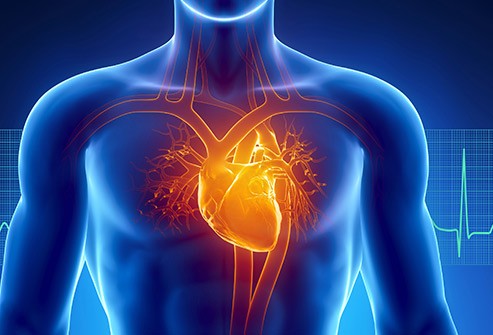The keto diet is unique in that the types of food consumed are very different than what most Americans are accustomed to. For example, carbohydrates are restricted while fat is consumed abundantly. This uniqueness even extends to vegetables.
Keto vegetables are nutrient dense and are low in carbohydrates. This rules out a few higher carb favorites – like potatoes and sweet potatoes. While these veggies can technically be consumed on a keto diet, they would need to be carefully consumed, and kept to very small portions.
What Is The Keto Diet?

The keto diet — also referred to as the ketogenic diet — is a low-carbohydrate diet, where your body uses fat for fuel. By removing almost all carbohydrates and inserting healthy fats in their place, your body enters an advanced fat-burning condition called nutritional ketosis. Once in ketosis, your body will start using fat for energy, rather than carbohydrates or glucose.
There are a number of ways to shift into nutritional ketosis. The most important priority is cutting down on carbs. The standard American diet suggests consuming between 200 and 300 grams of carbohydrates per day.
By contrast, keto usually involves eating only 20 grams of carbohydrates or less throughout the day. This drastic shift can temporarily put you in a funk called the ‘keto flu’, but it’s important to remember that this is just temporary.
While the keto diet is certainly high in healthy fats, cutting the carbs is actually the most critical step to getting (and staying in) ketosis. Before we dive into specifics, it’s important to understand exactly how our metabolism works.
Benefits Of Keto
Surprisingly, the ketogenic diet has been practiced for almost 100 years. It’s actually about the furthest thing from a fad diet. Initially conceived as a way to combat epilepsy, its popularity has greatly increased over just the last 5 years.
This is due to a number of positive scientific studies, as well as an increasingly large body of anecdotal evidence. The keto approach actually helps with several problems related to weight gain. This includes high blood sugar, hormone imbalances, and hyperinsulinemia.
Perhaps most interestingly, the keto diet has even been linked to positive benefits in those with neurological disorders. While the research is still being conducted, an increasingly large body of scientific evidence points to improvements in those with amyloid plaque buildup, as well as better outcomes for those with neurological dysfunctions.
Vegetables On Keto
Vegetables are packed with nutrition, and are an essential part of any healthy diet. Keto is slightly different however, in that high starch and high carb vegetables need to be left out of a keto meal plan. Below are some of the best keto vegetables to regularly include in your diet.
Top Keto Vegetables
Broccoli
A very common vegetable to see in a keto kitchen, and for excellent reason. Broccoli is packed full of vitamins C and K and only has 4 grams of net carbs per cup. Some studies show that broccoli can help decrease insulin resistance in type 2 diabetics and may also contribute to protecting against a few types of cancer.
Asparagus
At only 4 grams of net carbs per cup and one of our favorite keto vegetables, asparagus should be in everyone’s weekly rotation of low-carb side dishes. You can wrap it in bacon and serve with aioli, grill it, chop it up, or even add it to stir fries. Asparagus is also a great source of vitamins A, C, and K and has been shown in animal studies to help reduce anxiety and protect brain health.
Mushrooms
Mushrooms are a great way to add some rich flavor into dishes. They’re extremely low carb as well, with an average of only 1 gram of net carbs in each cup. Mushrooms have also shown incredible anti-inflammatory properties, and have been shown to improve inflammation in those with metabolic syndrome.
Zucchini
The most commonly used squash on keto, it is often seen in dishes like zoodles, serving as a noodle replacement. Be careful with some types of squash though, as most have much higher carb counts. Zucchini, by contrast, is very low in carbs – with only 3 net carbs per cup. Zucchini also serves as a fantastic source of vitamin C.
Spinach
It’s no surprise that spinach is one of the most eaten leafy green keto vegetables. Spinach has only 3 grams of net carbs per cooked cup, and contains almost no digestible carbs when eaten raw. Spinach also provides tons of vitamins and minerals, including about ten times the daily value of vitamin K.
Avocado
Although technically a fruit, avocados are often consumed in the place of vegetables. Avocados are very high in fat, so they’re commonly added into keto diets to help supplement fat intake. At only 3 grams of net carbs per cup, they’re a great choice.
Avocados are also rich in monounsaturated fats, which have been shown to help lower LDL cholesterol and triglycerides. They’re also a great source of vitamin C and potassium – so they can also aid with any potential electrolyte issues.
Cauliflower
Usually the star of unique dishes, cauliflower can be used for a variety of things. You can use cauliflower for wraps, pizza, casseroles, or even mashed “potatoes.” It’s no surprise that it’s one of the most used and most versatile ingredients in most low-carb kitchen pantries.
Besides being fantastic for its versatile cooking applications, cauliflower is very low carb with only 2 grams of net carbs per cup. It’s very high in both vitamin K and C, and is associated with a lowered risk of heart disease and cancer.
Kale
Kale is used in salads across the country, and has become a very popular choice in the health and wellness communities. Kale is also a fantastic low-carb option when it comes to vegetables. Kale also contains many vitamins, and it may also help to protect against heart disease.
Foods To Eat On Keto
Now that you know the science behind keto and what vegetables are best – the question becomes – what else can I eat on the keto diet?
Meat, Eggs, Nuts, and Seeds
Always choose the highest quality meat you can afford, selecting grass-fed and organic beef whenever possible. Other great choices include wild-caught fish, pasture-raised poultry, pork, and eggs. Nuts and seeds are also fine, and are best eaten raw.
- Beef: steak, veal, roast, ground beef, and stews.
- Poultry: chicken breasts, quail, duck, turkey and wild game.
- Pork: pork loin, tenderloin, chops, ham, and sugar-free bacon.
- Fish: mackerel, tuna, salmon, trout, halibut, cod, catfish, and mahi-mahi.
- Bone Broth: beef bone broth and chicken bone broth.
- Shellfish: oysters, clams, crab, mussels, and lobster.
- Organ Meats: heart, liver, tongue, kidney, and offal.
- Eggs: deviled, fried, scrambled, and boiled.
- Nuts and Seeds: macadamia nuts, almonds, and nut butter.
- Lamb
- Goat
Low-Carb Vegetables
As we’ve covered, vegetables are a great way to get a healthy dose of micronutrients, thus preventing nutrient deficiencies when consuming a keto diet daily.
- Leafy Greens: examples include kale, spinach, Swiss chard, and arugula.
- Cruciferous Vegetables: including cabbage, cauliflower, and zucchini.
- Lettuces: including iceberg, romaine, and butterhead.
- Fermented Vegetables: like sauerkraut and kimchi.
- Other Vegetables Low in Carbs: mushrooms, asparagus, broccoli, celery, etc.
Keto-Friendly Dairy
For dairy, choose the highest quality you can reasonably afford. Select grass-fed, whole-fat, and organic – whenever possible. Avoid low-fat or fat-free dairy products, as well as products with large amounts of sugar.
- Grass-Fed Butter and Ghee
- Heavy Cream and Heavy Whipping Cream
- Fermented Dairy Products (like yogurt and kefir)
- Sour Cream
- Hard and Soft Cheeses
Low-Sugar Fruits
Approach fruit with caution on keto, as it contains high amounts of sugar and carbohydrates. It is best to generally avoid, except for very small amounts of berries.
- Avocados (one of the only fruits you can indulge in excessively).
- Organic Berries: raspberries, blueberries, strawberries, and cranberries (a handful per day, max).
Healthy Fats and Oils
Healthy fat sources include grass-fed butter, tallow, ghee, coconut oil, olive oil, sustainable palm oil, and MCT oil. It is important to avoid low quality fats and oils.
- Butter and Ghee
- Lard
- Mayonnaise
- Coconut Oil
- Coconut Butter
- Flaxseed Oil
- Olive Oil
- Sesame Seed Oil
- Walnut Oil
- Olive Oil
- Avocado Oil
Foods To Avoid On Keto
It’s best to avoid any foods not listed above when following a ketogenic diet. Generally this means: no grains of any kind, no high sugar foods (including fruit), no processed foods, no alcohol, and no “diet” foods.
These foods usually contain a large amount of sugar alcohols, which can actually knock you out of ketosis. Plus, it’s much easier to stay on the keto path if you just remove these foods from your pantry (and life) altogether.
What Are Ketones?
During this metabolic shift, your body turns fatty acids into something called ‘ketones’. Your body essentially responds to a depletion of carbohydrates, by quite literally making a new form of fuel.
These ketones are produced by your liver and they are composed of fat, hence why the keto diet is usually referred to as a ‘fat burning’ approach. While ketone production is greatly increased during a ketogenic diet, the truth is that ketones are nearly always floating around your system.
The process of turning stored fat into energy is known as beta-oxidation. There used to be confusion around ketosis, and a much different (and highly dangerous) process called ‘metabolic ketoacidosis’.
But the truth is that nutritional ketosis and metabolic ketoacidosis have very little in common. During the process of nutritional ketosis, which is very safe, any excess ketones will be eliminated via your breath or urine.
Interestingly, there is not just one type of ketone body but rather three. There’s acetone, BHB (beta-hydroxybutyric acid), and AcAc (acetoacetate). Of these, BHB is not technically a ketone, due to its structure. However, for our intents and purposes, BHB is included in nearly every discussion of ketogenic diets.
Both AcAc and BHB help to transport energy from your liver to the other tissues inside your body. AcAc is the first ketone created, and from there, BHB is formed. Acetone is made as a byproduct of AcAc, but it plays the least important role in the metabolic process of ketosis.
Acetone is also notable for being the main reason behind keto breath, which is that slightly fruity smell that sometimes accompanies a keto dieter’s outward breaths. Scientists are not entirely sure why we have the ketogenic process built into our bodies, but they surmise that we have the metabolic machinery necessary for ketosis because our ancestors needed an alternative fuel, when food was scarce for long periods of time.
This actually makes perfect sense, as otherwise we would have starved fairly quickly, and possessed no other way to produce energy. In fact, before agriculture, it’s estimated that most of the human diet was very low carb, as higher carbohydrate foods were largely unavailable.
Measuring Your Ketones
While you can eat the right foods, especially vegetables, on keto, you will also want to accurately measure your ketone levels. Until now, there has not been a convenient and reliable way to check your ketones. That’s why we invented the first and only clinically backed ketone breath monitor.
By simply breathing into our device, you will have a reliable measurement of your current ketone levels – in just seconds. No more urine strips, no more pricking your finger – just a fast, easy and reliable breath test. You can bring our device with you to the office, take it to the gym – you can truly check your ketones anywhere.
Unlike previous devices, which were often poorly made, unreliable, and not backed by clinical research – our ketone breath monitor is patented. This means no other device is legally allowed to use our exclusive technology. Whether you are brand new to keto and want a convenient and reliable way to check your ketone levels, or you’re an elite level biohacker – we are the perfect way to measure your ketones.
You don’t need to worry about continually buying strips or pricking your finger – we have all you need, in just one device. One of our favorite features is the personalized insights you get with the device. Every time you measure, your results are graphed and stored so you can easily track your progress.
Until now, there has not been an easy and convenient way to check your ketone levels – which has made many people give up on keto entirely. But that outcome is no longer necessary, as we’ve made a device that does all the work for you.
Just simply take one outward breath into the device, and within seconds you’ll know your ketone level. Whether your goal is to burn fat, lose weight, or improve your blood sugar – we have the answer.



